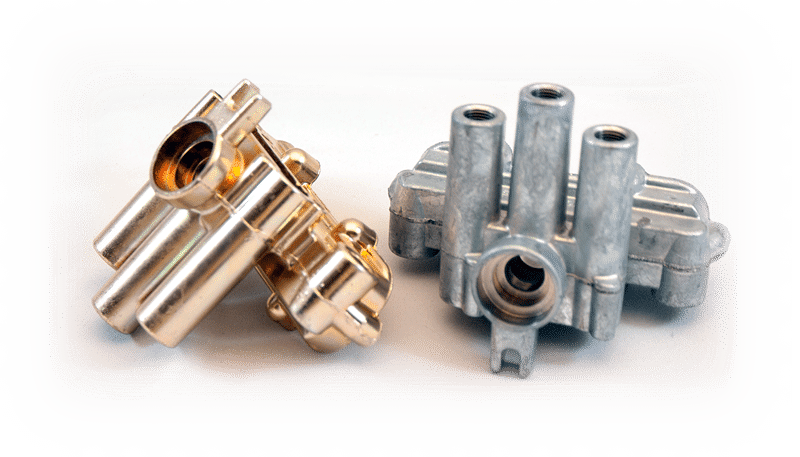The world is facing a growing demand for energy as the population increases. However, the traditional sources of energy, such as fossil fuels, are running out and causing environmental problems. Therefore, we need to switch to renewable energy sources as soon as possible. 3D printing is a technology that can help us achieve this goal, by improving efficiency and reducing the cost of energy production and storage. 3D printing can also enable new ways of creating and using energy that were not possible before.
How can 3D printing change the energy sector? The answer is that it can improve both existing methods and create new ones for generating and storing energy. 3D printing can revolutionize the renewable energy sector and help us build a greener future.
In this article, we will look at some examples of how 3D printing is being used in different energy applications. We will see how 3D printing can enhance the performance and design of energy devices and systems. We will also explore how 3D printing can create new opportunities and challenges for the energy industry.

Renewable Energy Transition with 3D Printing
Renewable energy sources are the future of our planet, and 3D printing technology can help us get there faster. 3D printing technology allows us to create unique objects in three dimensions, using a computer design and different materials. This technology has many benefits for renewable energy, such as lower costs, higher efficiency, and more customization.
What is 3D Printing Technology?
3D printing or additive manufacturing is a process that creates objects by adding layers of material on top of each other, following a computer design. The computer design specifies the shape and size of the object, and the 3D printer uses different methods to deposit the material. There are many types of 3D printing, such as material extrusion, direct energy deposition, binder jetting, etc. The advantages of 3D printing are that it is fast, accurate, and flexible. It can create complex shapes that are difficult or impossible to make with traditional methods. It also reduces waste and saves money on production costs. 3D printers can vary in size and capacity, depending on the needs of different industries.
Importance of the Energy Sector in Modern Society
We depend on the energy sector for many aspects of our modern life, from lighting our homes and offices, to powering our devices and machines. The energy sector is a key driver of economic and social progress, providing the power that enables us to live comfortably, productively, and efficiently. A well-functioning energy sector reflects a high level of economic development and growth. The availability of reliable and affordable energy supports industrial and business activities, creates employment opportunities, and improves living standards.
The energy sector also faces the challenge of climate change, which poses a serious threat to our society and environment. The energy sector has been a major source of greenhouse gas emissions, which contribute to global warming and its negative consequences. However, the energy sector is also part of the solution, as it transitions to cleaner renewable energy sources that can reduce emissions and help fight climate change. The energy sector adopts clean energy technologies to lower its environmental impact and promote sustainable development. This also enhances the role of the energy sector in improving public health and safety.
Moreover, the energy sector also affects national security. A secure and reliable energy supply reduces the risk of geopolitical conflicts and supply disruptions. Societies that can meet their own energy needs can reduce their reliance on foreign sources while having more autonomy over their energy supplies.
Lastly, the energy sector stimulates innovation and technological progress. The new, advanced technologies ensure more efficient and cost-effective energy systems. Such innovations can help increase energy efficiency in modern society while keeping energy costs low.
The Potential of 3D Printing to Transform the Energy Sector
One of the most exciting technologies in the field of energy innovation is 3D printing. This advanced process can transform the energy industry by creating complex, customized shapes for various energy applications. 3D printing not only offers more design freedom, but also improves energy performance and speeds up the development of new energy solutions. As a result, more and more manufacturers are using online 3D printing to accelerate the adoption of new renewable energy sources.
In addition, 3D printing can also enhance the reliability and efficiency of existing energy systems. The ability to produce parts on demand lowers the maintenance costs of energy infrastructures. Some impressive studies even indicate that additive manufacturing could cut the production costs of solar panels by half while boosting their efficiency by over 20%. Similarly, manufacturers are using 3D printing to make large-scale components near wind turbines, which improves turbine performance and saves costs and transportation issues. The potential of additive technology is still being explored by innovative companies. Their research investigates new 3D printing materials and techniques, broadening the range of applications. At the same time, efforts are being made to establish solid industry standards, enforce strict quality control procedures, and simplify certification processes for 3D-printed energy components. The overall outcome is a clear path towards a future where 3D printing technology becomes more and more essential to the energy industry, leading to a new level of efficiency and sustainability.
Advantages of 3D Printing in the Energy Sector
3D printing is a technology that creates physical objects from digital models by depositing layers of material on top of each other. It has many applications in various industries, including the energy sector. Here are some of the advantages of 3D printing in the energy sector:
Rapid Prototyping and Reduced Development Times: 3D printing allows for faster and cheaper prototyping and testing of new designs and concepts, reducing the time and cost of product development.
Customization and Complex Geometries: 3D printing enables the creation of customized and complex parts that are difficult or impossible to make with traditional manufacturing methods, such as turbines, heat exchangers, fuel cells, batteries, etc.
Reduced Waste and Increased Sustainability: 3D printing uses less material and energy than conventional methods, resulting in less waste and emissions. It also allows for the reuse and recycling of materials, as well as the production of parts on demand, reducing the need for inventory and transportation.
Cost-effectiveness and Accessibility: 3D printing can lower production costs and increase the profitability of energy products and services, especially for small-scale and remote applications. It can also democratize access to energy solutions by enabling local and distributed manufacturing. 3D printing is a promising technology that can transform the energy sector by enhancing innovation, efficiency, quality, and sustainability.
Challenges and Limitations of 3D Printing in the Energy Sector
3D printing is a revolutionary technology that can enhance efficiency, accuracy, and innovation in the energy sector. However, it also faces some challenges and limitations that need to be addressed before it can be widely adopted and implemented. Some of these are:
Material Limitations: 3D printing requires specific materials that are compatible with the printing process and the desired properties of the final product. These materials may be expensive, scarce, or difficult to source. Moreover, some materials may pose environmental or health risks during or after printing, such as toxic emissions or waste disposal.
Scaling Up Production: 3D printing is ideal for prototyping and small-scale production, but it may not be able to meet the high-volume and high-speed demands of the energy sector. 3D printing is still a relatively slow and costly process compared to traditional manufacturing methods, and it may require more post-processing and quality control. Additionally, 3D printing may face challenges in ensuring consistency and reliability across multiple printers and locations.
Regulatory and Safety Concerns: 3D printing involves complex and novel processes that may not be fully understood or regulated by existing standards and regulations. This may create uncertainty and liability issues for both producers and consumers of 3D printed products. Furthermore, 3D printing may pose safety risks for workers and users, such as fire hazards, mechanical failures, or cyberattacks.
Intellectual Property and Standardization: 3D printing enables easy replication and customization of products, which may infringe on the intellectual property rights of original designers or manufacturers. This may also create confusion and conflict over ownership, responsibility, and quality of 3D printed products. Moreover, 3D printing lacks universal standards and protocols for design, data, and communication, which may hinder interoperability and collaboration among different stakeholders.
Renewable 3D Printing Energy Projects
Despite the challenges and limitations, 3D printing also offers great opportunities for developing renewable energy projects that can reduce greenhouse gas emissions, lower costs, and increase accessibility. Some examples of these projects are:
Solar Power: 3D printing can be used to create solar panels that are lighter, cheaper, and more efficient than conventional ones. For instance, researchers at MIT have developed a 3D printed solar cell that can produce up to 20 times more electricity than a flat panel of the same size. 3D printing can also be used to create solar concentrators that can capture more sunlight and generate more power.
Wind Energy: 3D printing can be used to create wind turbines that are more aerodynamic, durable, and adaptable than traditional ones. For example, GE has developed a 3D printed wind turbine blade that is 40% lighter and 25% more efficient than a conventional blade. 3D printing can also be used to create customized wind turbines that can fit different locations and conditions.
Energy Storage: 3D printing can be used to create energy storage devices that are more compact, flexible, and powerful than conventional ones. For example, researchers at Harvard have developed a 3D printed lithium-ion battery that is smaller than a grain of sand but can store as much energy as a commercial battery. 3D printing can also be used to create supercapacitors that can store and release large amounts of energy quickly.

Conclusion
3D printing is a revolutionary technology that has the potential to transform the energy sector and accelerate the transition to renewable energy sources. 3D printing can offer many advantages such as rapid prototyping, customization, reduced waste, cost-effectiveness, and accessibility. However, 3D printing also faces some challenges and limitations such as material limitations, scaling up production, regulatory and safety concerns, and intellectual property and standardization issues.
Despite these challenges, 3D printing has already been successfully applied to various renewable energy projects such as solar power, wind energy, and energy storage. These projects demonstrate the feasibility and benefits of 3D printing in the energy sector and pave the way for further innovation and development. 3D printing is not only a tool for creating energy products, but also a source of energy itself. By harnessing the power of 3D printing, we can create a more sustainable, efficient, and resilient energy system for the future.
Contact us today to get the best 3D printing service. You can also upload your design files to our platform and receive a quote within a few hours.





